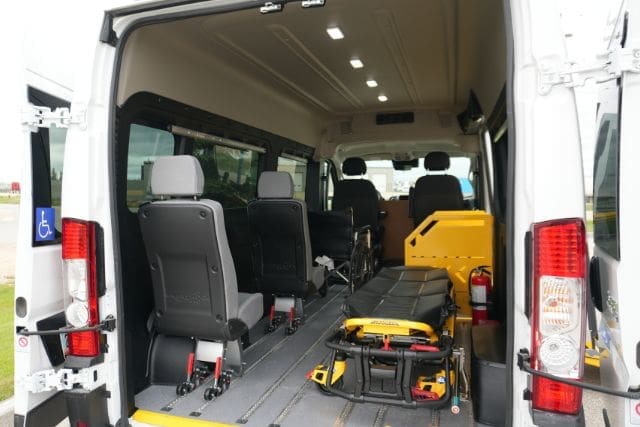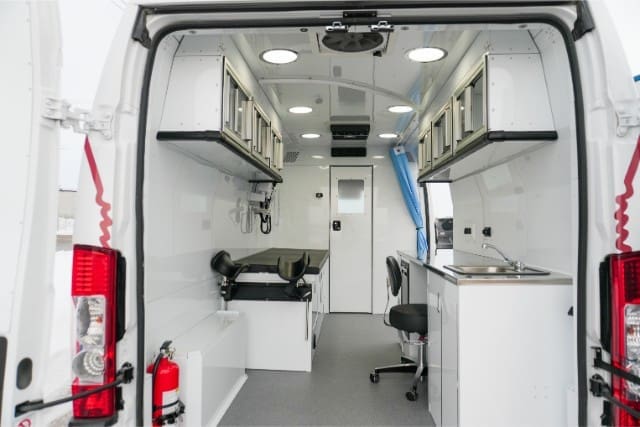Is your organization in the midst of starting a handi or urban transit program, and you’re wondering about wheelchair van customization options available to you? Choosing the wrong customization options could lead to one of those vehicle experiences from a nightmare. Some issues that could pop up if you don’t choose wisely are:
- Accessibility problems
- Safety concerns
- Lack of comfort
- Wasted resources
- Client frustration
Our experience over the past 20+ years manufacturing wheelchair accessible and mobile medical vans at MoveMobility tells us that it’s always important to get it right the first time. When we customize vehicles for organizations like yours, we go to great lengths to understand your problems and concerns. That’s one of the reasons why we’re writing this article for you.
As you’re reading this article, you’ll learn more about the wheelchair van customization options for handi and urban transit programs. We’ll also talk about some maintenance considerations you should keep in mind.
What wheelchair van customization options are available?
When it comes to making wheelchair vans accessible and user-friendly, customization plays a huge role. Each customization option serves an important purpose. Let’s dive into some key customization options that meet the unique needs of your clients in transit and your organization. Each is designed with a purpose to meet the unique needs of individuals with disabilities in transit.
1. Cameras for liability
Installing cameras enhances safety and accountability. These cameras act as vigilant eyes, recording events in and around the van. If you run into any accidents or issues, it helps to determine exactly what happened. This ensures the safety of passengers and protects the van operator from unwarranted liability.
2. Fareboxes
Fareboxes make payments easy. It’s important for clients to have a clear and simple way to pay for transit services. Fareboxes help transactions go smoothly and create a better transit experience for everyone.
3. Exterior wraps for logos
Exterior wraps serve a dual purpose. Beyond brand promotion, they provide a visually appealing and easily recognizable identity to the van. Clear identification is important for individuals with disabilities. It gives them easy recognition of your transit services. It also contributes to a sense of reliability and trust in the community.
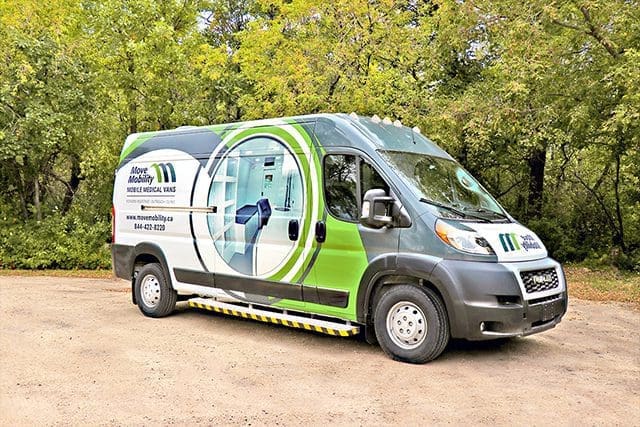
4. Variety of seating options
One size doesn’t fit all, especially when it comes to seating. When you offer a variety of seating options, it ensures comfort and accessibility for your clients with diverse needs. From traditional seating to configurations allowing more space for wheelchairs, these options cater to everyone fostering an inclusive and comfortable environment. Fortunately, AutoFloor makes it straightforward to configure the seating.

5. Lift or power ramp
Making entry and exit seamless should be a top priority for hand and urban transit programs. Lifts or power ramps provide a dignified way for wheelchair users to board and exit the van so they can get where they need to be. This customization promotes autonomy, which is important for wheelchair users. It also addresses the practical challenges of boarding for those with mobility devices.
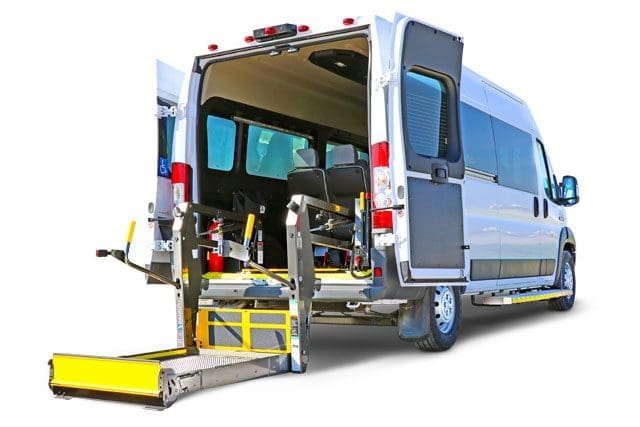
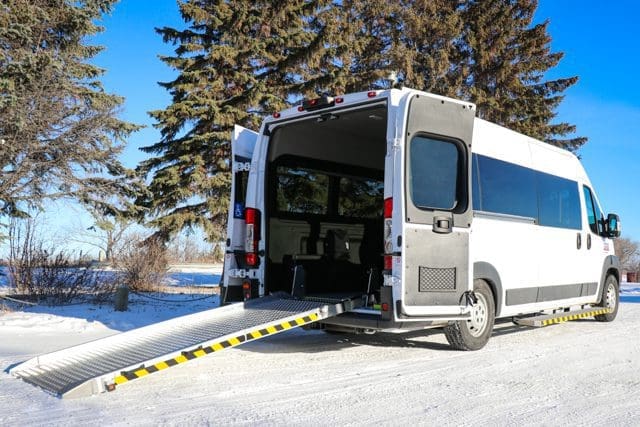
6. Walker storage
Having a dedicated storage space for people who rely on walkers for mobility ensures a clutter-free area in the van. This makes it much safer for your clients in the van. It also makes movement easier and improves the entire transit experience.
7. Electronics storage
Electronics have become somewhat of a lifeline in today’s digital age. Dedicated storage for electronics means that individuals with disabilities can securely store and access their devices during transit. This customization enhances convenience and connectivity.
8. Exterior lighting
Well-lit exteriors are essential for safety, especially during boarding and exiting. Exterior lighting enhances visibility and contributes to a safer environment for everyone. This customization is particularly beneficial during low-light conditions, ensuring a secure transit experience.
Wheelchair van customization goes beyond just the aesthetics of the vehicle. It’s about creating an inclusive, safe, and comfortable transit experience for all individuals. Each customization option plays a role in achieving this goal.
Wheelchair van customization: Navigating safety standards in handi and urban transit programs
Safety should always be the top priority for any manufacturer when it comes to wheelchair van customization. Customization is somewhat like building a puzzle – how the pieces fit matters. The materials used and the quality of workmanship are also important puzzle pieces. These ensure a sturdy and secure ride for everyone.
Now, let’s talk rules. 20+ years and AODA requirements might sound like a secret code, but it’s about making sure these vans are compliant with regulations. When customizing a wheelchair van, you can’t just throw random parts together and hope everything works out.
From ramps to spacious interiors, these standards guarantee a smooth and safe journey for wheelchair users. So, when your clients roll into your customized vans, they’ll know that every detail is crafted to make sure their ride is accessible, secure, and reliable too.
FAQ
Q: What features are important for a van to work well in busy urban transit programs?
A: To handle urban challenges, your organization needs to think about specific van features like:
- Size: It should be just right to navigate through busy city streets.
- Fuel efficiency: Choosing vans that use fuel wisely is good for costs and the environment.
- Lower maintenance costs: Vans need less upkeep to stay on the road, providing reliable transit.
Q: How much does it cost to train a driver for handi and urban transit?
A: Training a driver for handi and urban transit typically costs around $3,000. This expense emphasizes the importance of selecting and customizing vans with user-friendly features. Doing so will lower the training costs.
Q: Why are driver turnover rates and training costs important to think about when choosing vans for handi and urban transit?
A: With driver training costing around $3,000, fleets with more than a 25% turnover could see training costs add up fairly quickly.
Q: How important is it to consider driver availability in the decision-making process for vans in handi and urban transit?
A: A reliable pool of trained drivers is essential for maintaining consistent and efficient transit services. Without sufficient availability, transit operations may face disruptions, affecting the reliability and timeliness of services in both handicapped and urban settings.
Where to go from here with MoveMobility
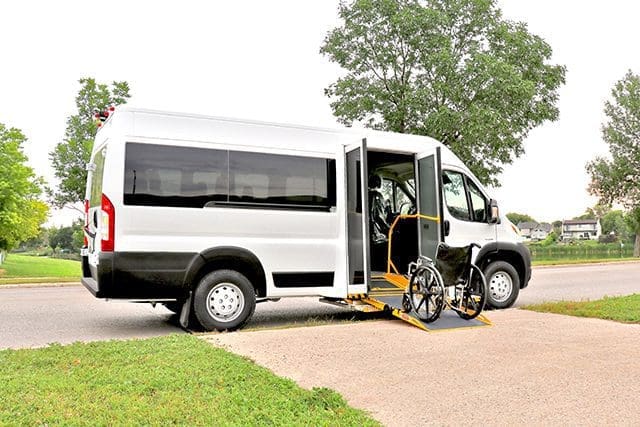
You found this article while looking at some of the potential wheelchair van customization options available for handi and urban transit programs.
You learned about 8 common customization options to consider as you research your journey. We also left you with some insight into driver training for these vehicles, which is important.
Hundreds of our clients have found safe and reliable transportation through the vehicles we manufacture at MoveMobility. If you have any questions regarding our wheelchair vans, don’t hesitate to click the button at the end of this article to talk to an expert.
From here, you’re probably curious about how much wheelchair vans cost. Take a look at our article or video below on the cost of a wheelchair van for the answer to that. You should also read through our article on how to choose a wheelchair van. You’ll find this article to be full of useful information to help you decide what to pick.




